Meeting Hom, our sponsored child in Thailand!
Marine is sponsoring Janyawan (Hom), a little boy from Thailand. During her trip to Thailand, she visited him at his school…
In the north of Thailand, neighbouring Myanmar and Laos, the Burmese civil war and the global pandemic have made families even more precarious. Taking advantage of this regional instability, trafficking activities have resurfaced, targeting the most vulnerable members of society: unaccompanied refugee minors and street children.
By Antoine BESSON
On a high hill near Mae Sai, in northern Thailand, a monumental Buddha faces a vast plain. The peacefulness of the Enlightened One’s face contrasts with the sinister reputation of the place.
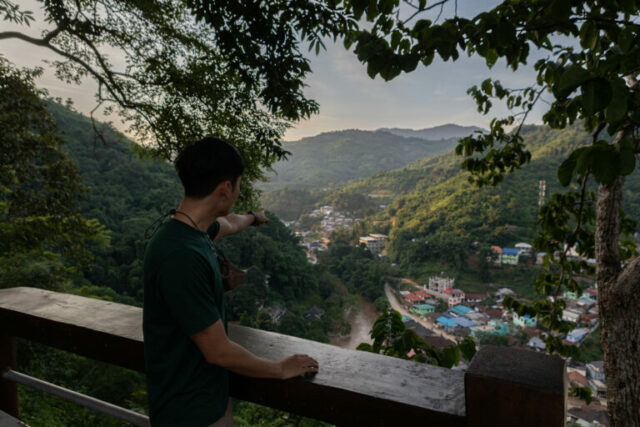
The other side is Myanmar. This is where many families cross the border illegally”, explains Oot*, pointing to a river running at the bottom of the valley.
What these families are escaping from is, first and foremost, the war. A murderous civil war that has been ravaging the country since the 1st of February 2021, when the Burmese army drew a sharp line under the democratic parenthesis that had animated the country since 2011. Since then, attacks on civilians have multiplied and more than half the country has been plunged into destitution, living on less than £1.50 a day.
For many Burmese in the east, Thailand has become synonymous with a safer life free from deprivation. The illusions of war create dreams and mirages where life has given way to survival. According to local associations, half of the two million Burmese migrant workers in Thailand are in an irregular situation, despite the Thai army’s constant efforts to repel the refugees.
The exotic landscape hides a border and its armed guards. The gunfire you hear at night speaks of the mortal danger of crossing. Yet here, in Mae Sai, in the heart of the infamous Golden Triangle, the border area shared by Laos, Myanmar and Thailand where trafficking of all kinds proliferates, clandestine crossings go back long before the current war. Oot is a familiar face here. For more than 10 years, he has been trying every evening to establish contact with the unaccompanied minors who cross the border.
Together with Nutchanad Boonkong, better known as Kru Nam, the director of the foundation he works for, they are trying to protect and offer an escape route to those who are the preferred victims of the local traffickers: the children!
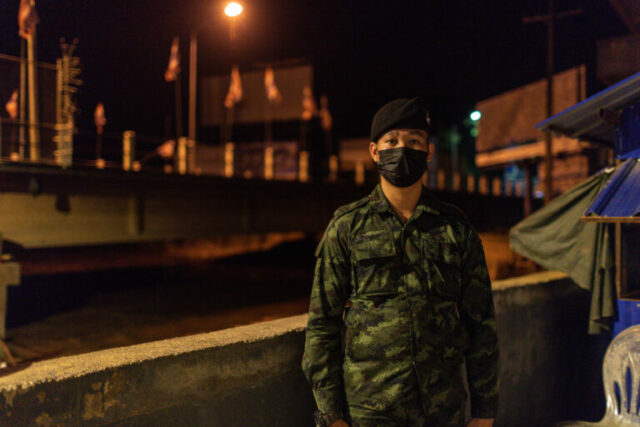
Teng Mo’s story is like no other. It tells the story of the difficulties of our times and the dangers that threaten children separated from their families. The young girl belongs to the Akha ethnic group, one of Myanmar’s 135 minority ethnic groups, particularly represented in Shan State on the border with Thailand.
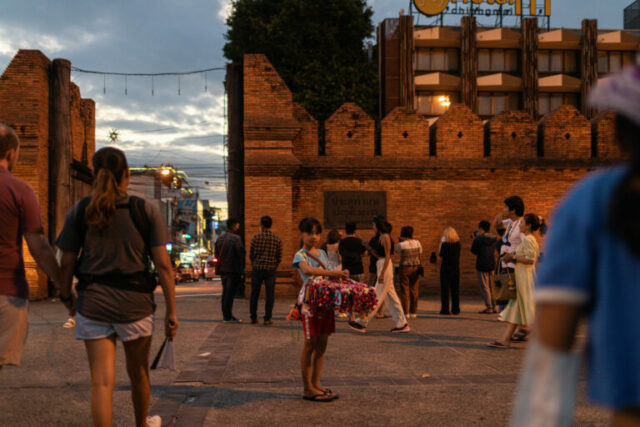
We still don’t know how Teng Mo entered the world of traffickers. Was she a lost child? Was she taken from her family? Or was she sold by her family?
It’s all possible. Kru Nam has encountered all three scenarios. “We know that Teng Mo belonged to three different families who bought her successively for different jobs”, explains the woman who took the child into her home at the age of 7. At the age of 3, Teng Mo was an alibi child who enabled drug traffickers to deliver drugs by numbing the authorities’ vigilance. Who would go searching through a child’s nappy or the carton of fruit juice in their hand? In reality, they may be hiding hundreds of doses of Ya Ba: a synthetic methamphetamine with an extremely toxic composition: red phosphorus, iodine, lithium, anhydrous ammonia, as well as solvents, bases and acids (toluene, sulphuric acid, hydroiodic and hydrochloric acid, soda and ammonia). Adults hide behind children: “Last January, an 8-year-old child was arrested by the police in Chiang Mai with more than 4,000 doses on him“, comments Oot. When his owner died of tuberculosis, Teng Mo was taken back by the traffickers. The traffickers introduce themselves to the parents as employment agencies and promise to find a job for their child.
Families are paid around 5,000 baht (GBP 115) and believe they are offering their offspring a better life, while the children disappear. In Thailand, a child abuser can pay 40,000 baht (GBP 929) for a young girl aged between 11 and 16.
Paedophilia is not the only business for human traffickers in the region. Forced labour, even modern slavery, trafficking in drugs, organs or young girls to be married off to China is unfortunately commonplace. In the face of unspeakable horror, only courage can bring a little light into the darkness.
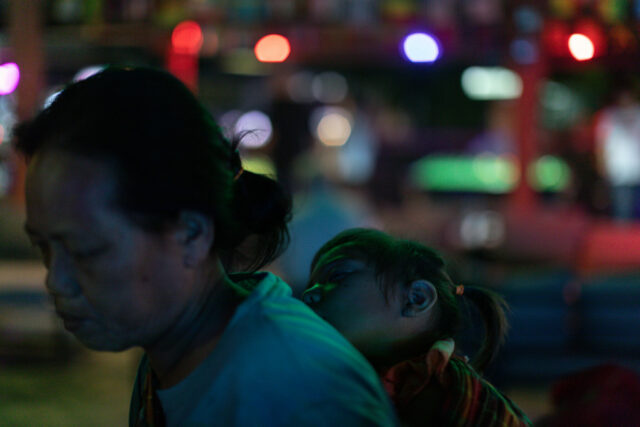
This is the story of Kru Nam, who has been doing everything she can to protect street children since 2000.
A courageous woman whose surname means “the teacher of water” because she is said to possess the same virtues: strength and temperance, she stands as a bulwark against all dangers. But she is thus as elusive as water: never where you expect her to be.
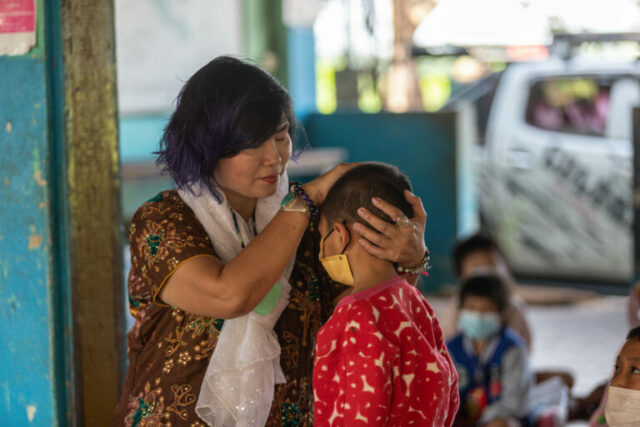
A colossal woman with a smile of clay and a tender heart, Kru Nam has reinvented herself as a mother to nearly 500 children rescued over more than 20 years, between Chiang Mai, previously the sad capital of drug addicts and paedophiles, and Chiang Rai, close to the border. Because it’s not just child refugees from Myanmar who are easy targets in Thailand. All those whose life has thrown onto the streets are exposed in spite of themselves.
Time, whom we met by chance in Chiang Mai, is a survivor. He is today a high-school student and future engineer. Together with Kru Nam, whom he recognised from far away, he remembers a time when Tha Phae Gate Square was not the clean, touristy place it is today, but a sordid squat where children of all ages could sell and consume drugs. Holes in the historic fortifications gave access to hidden corners where people traded bodies.
Time is originally from Puttaloong province in southern Thailand. The sky must have been cloudy and his lucky star absent on the day he was born, or when his mother took him to Chiang Mai. There, she got a job as a waitress in a bar, while his father was arrested for murder in connection with a drug dealing case. Tired of a mother who comes home drunk at night, beats him and locks him up, Time decides to run away from home. At the age of 6, he ends up on the streets, where he thinks he will make friends. Despite his young age, the gang of lost children forced him to have sex in groups. First between children, then with adults, “always Thai people” he says.
It was after a few months of this joyless and uncaring life that he met Kru Nam. She was a street teacher at the time. Her mother was a street seller in Bangkok, and she had set her sights on a brilliant future in jewelry design. However, touched by the tragic fate of the hundreds of abandoned children arriving in the capital, she preferred to return to the streets. And rather than stay in Bangkok, where associations already exist, she sets off in search of the root of the evil: where these children’s live turns upside down, where despair leads them down the slippery slope to their first vices. Right on the sidewalk, she doesn’t judge anyone, she teaches drawing.
It was a way of getting children to talk without rushing them. They expressed their situation, where they were from, why they had fled, through drawings.
A concrete way of helping them afterwards. “A way, too, of managing their emotions and sometimes even earning a bit of money when they were talented and could resell their drawings to tourists,” explains this convinced artist who has turned away from her art to better transmit the value of life and fight against social injustice. “I remember the emotion I felt when, for the first time, I made it possible, through drawing, for a child to return home.” His name was Ai, and he was just 7 years old, shooting up with glue in the vicinity of Bangkok’s railway station. Through drawing, she was able to piece together his story, build a trusting relationship and find his mother.
A story with a happy ending, thanks to Kru Nam, like hundreds of others. As a child, Oo sold and consumed cocaine on the streets of Chiang Mai. Thanks to Kru Nam, he discovered drawing: “It was like regaining my freedom“, he says. Today, he is a father and sells his paintings in a gallery.
“It’s always a question of trust,” explains Kru Nam. That is why she has created a unique system: a network of concerned people who care about the fate of street children – something rarer than it seems today, in an adult world where necessity is the law.
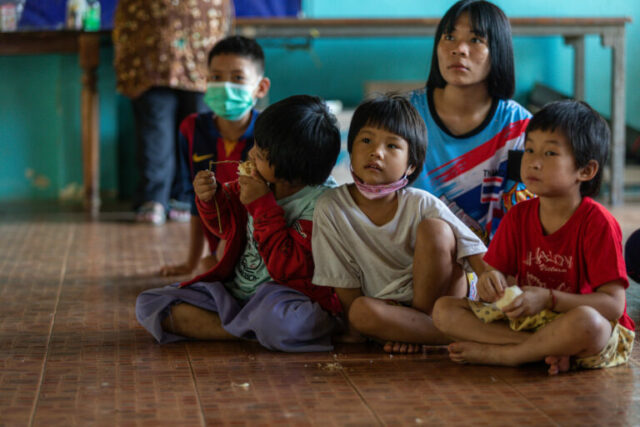
It’s Oot, a young social worker, who spends his evenings chatting with the gangs of children from Mae Sai. It’s Char Few, a teacher in Myanmar on the other side of the border and former loved one of Kru Nam, who keeps an eye on the surrounding villages and buys up children promised to traffickers, then sends them home.
That’s how Teng Mo was rescued from the threat of being sold. In reality, it’s an arsenal of goodwill and anonymous survivors who all turn to Kru Nam in their hour of need. Kru Nam welcomes unconditionally, first in a day-care centre where children are free to leave whenever they want: “It’s the first stage in their choice to gradually give up their life on the streets,” explains Oot, who runs small training courses on social living. Here, they can sleep in safety and eat what they want.
It’s always a question of trust
“It’s essential that the children themselves choose to leave the streets, otherwise they’ll go back no matter what,” explains Kru Nam.
Street children’s loyalty to their owners is immense. They fear that their desertion will have consequences for their families back in the village. These children are proud to be able to help their families. After the day centre, if they choose to, the children are welcomed into a boarding house where they are fully taken care of, and thanks to which they can resume their schooling. A fervent Buddhist, Kru Nam also organises visits for these children to the nearby pagoda, so that they can benefit from more spiritual teachings and contribute to the local community.
Does it work every time? Of course not. “Sometimes the temptation is strong to stop,” confides Kru Nam with tears in her eyes. She thinks back to the children she was unable to save. Amy in particular, a 7-year-old girl who disappeared overnight. International police tracked her down months later. She had been sold so that her heart could be harvested. But it is also in the name of all these children that she must continue, those who have disappeared and the 500 children she has already saved from a similar fate: “If not me, who? I’m ready to fight and die for these children. I’m not afraid of the mafias or the police“, exclaims the woman who likes to remind us that:
when you save a child, you push him or her into the stars
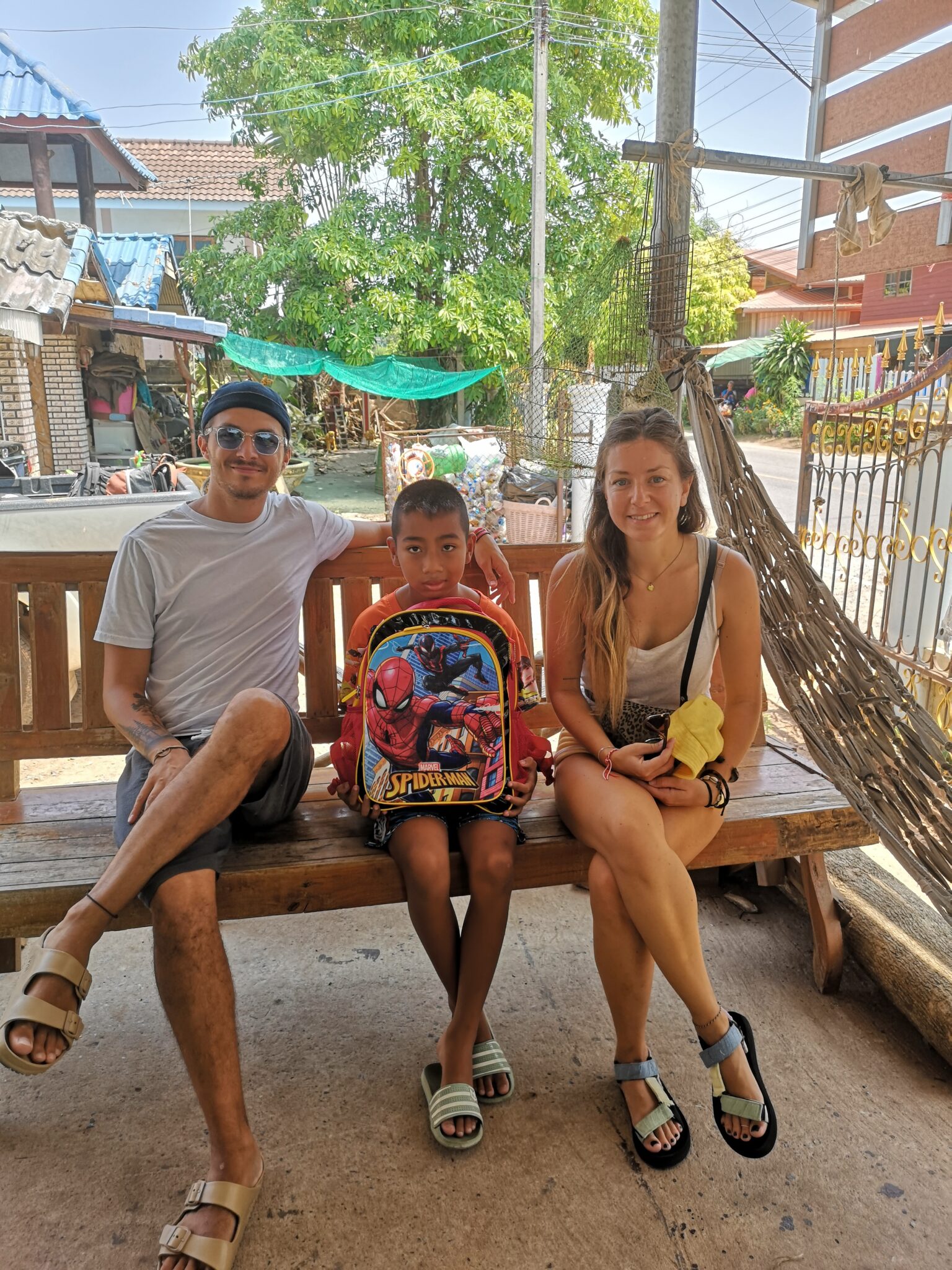
Marine is sponsoring Janyawan (Hom), a little boy from Thailand. During her trip to Thailand, she visited him at his school…
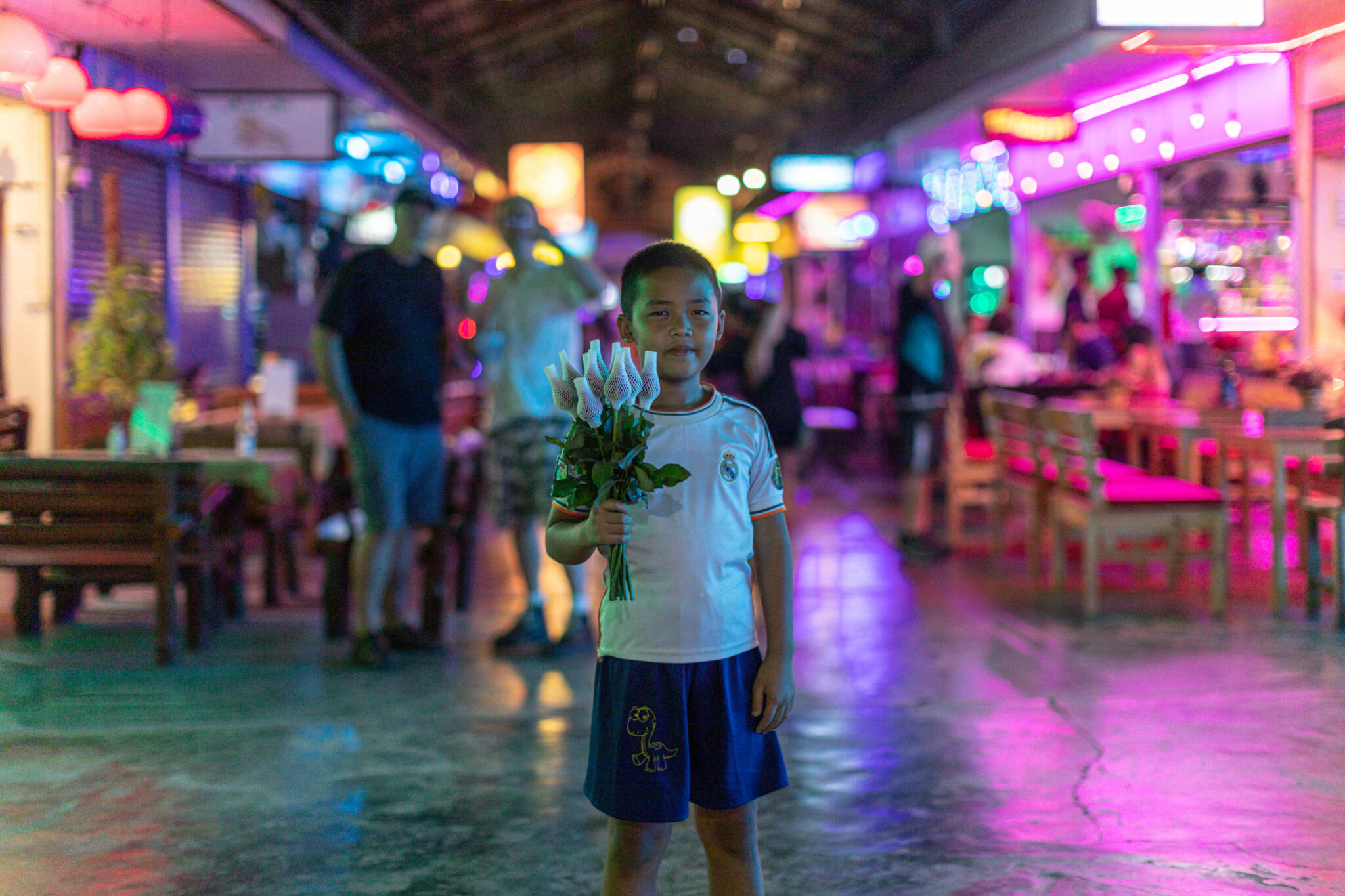
In the north of Thailand, trafficking activities have resurged and primarily target the most vulnerable individuals: unaccompanied refugee minors and street children.
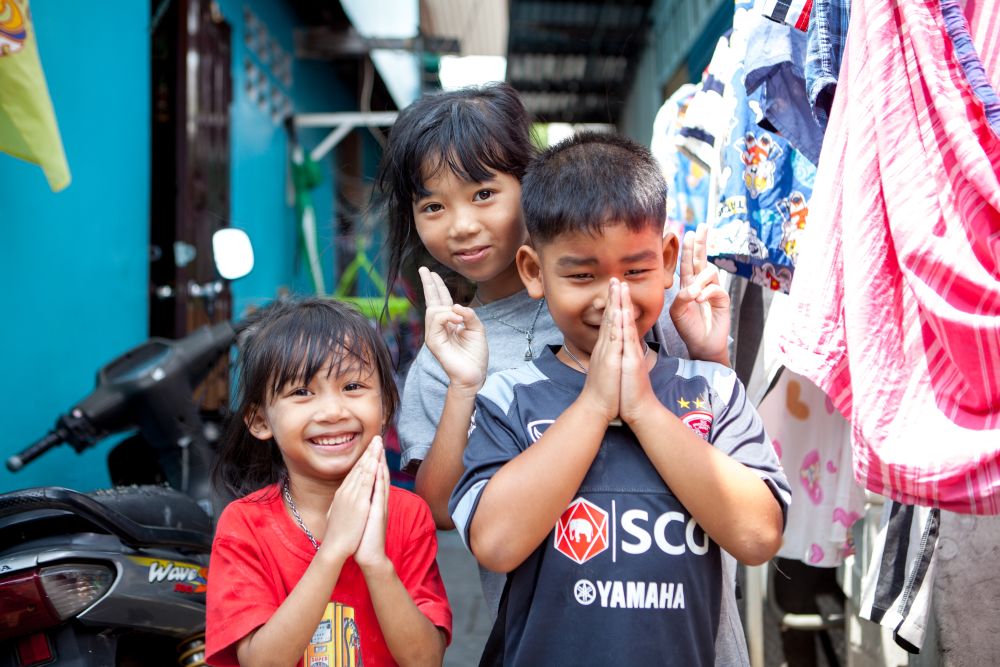
Thailand has made impressive progress in improving the well-being of children over the past few decades. Despite this progress, there are still many challenges […]

Students in most countries have since fallen behind their learning, specifically children living in the poorest families, those living in rural areas, and children […]